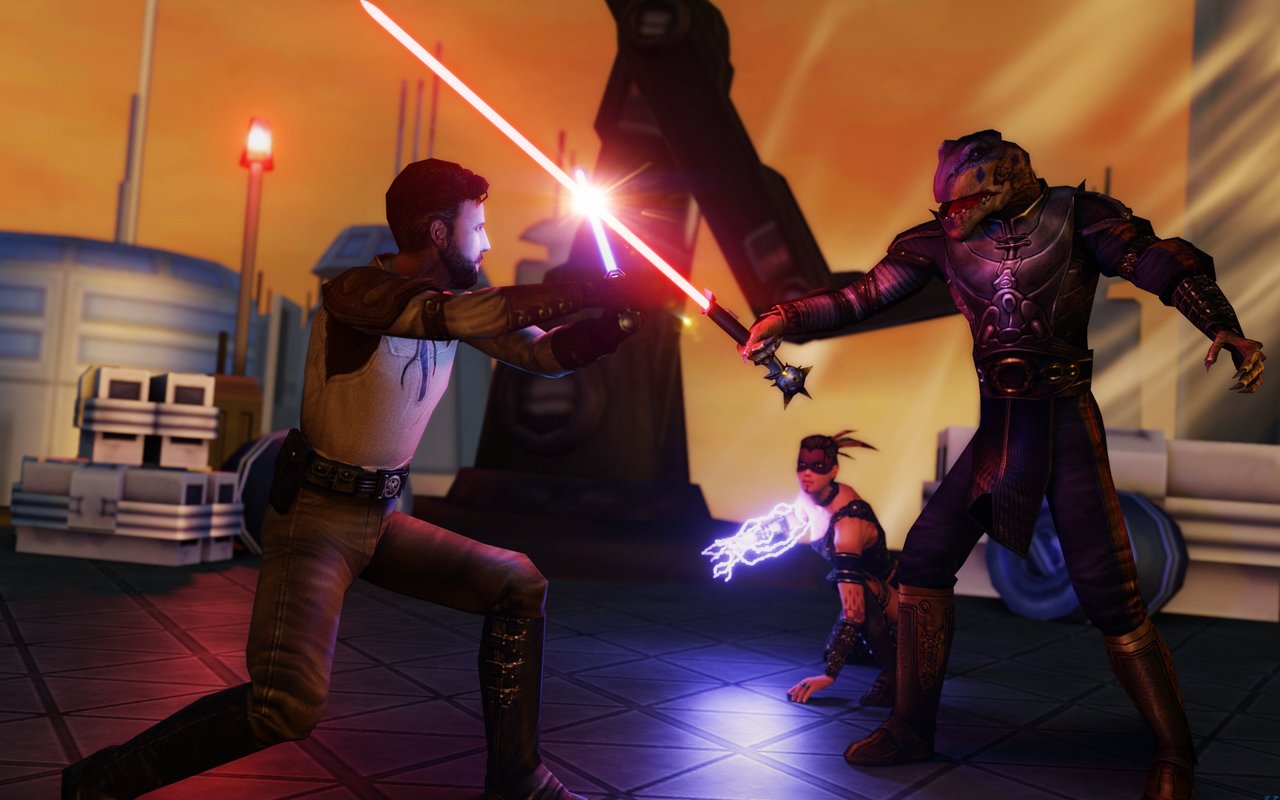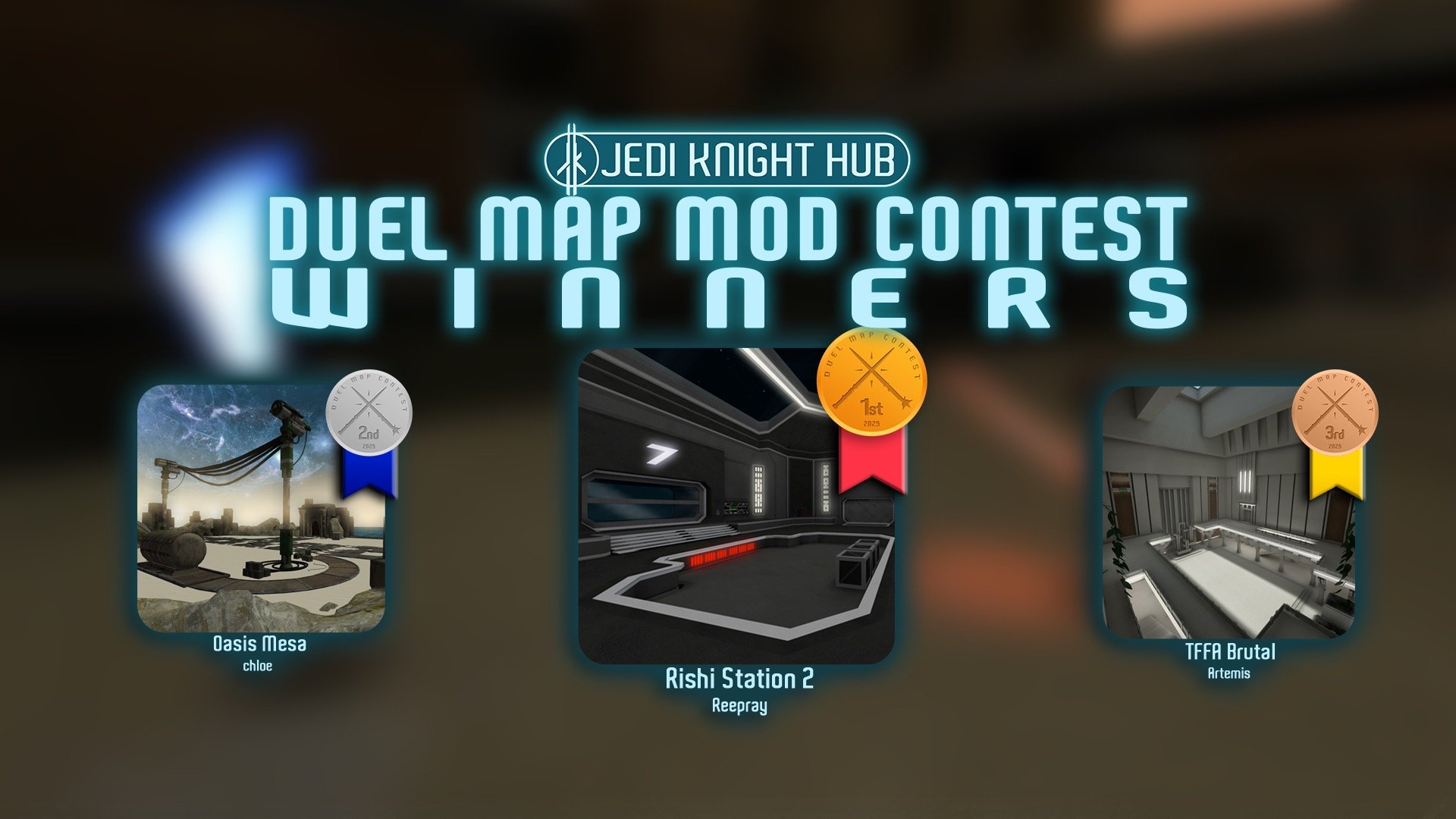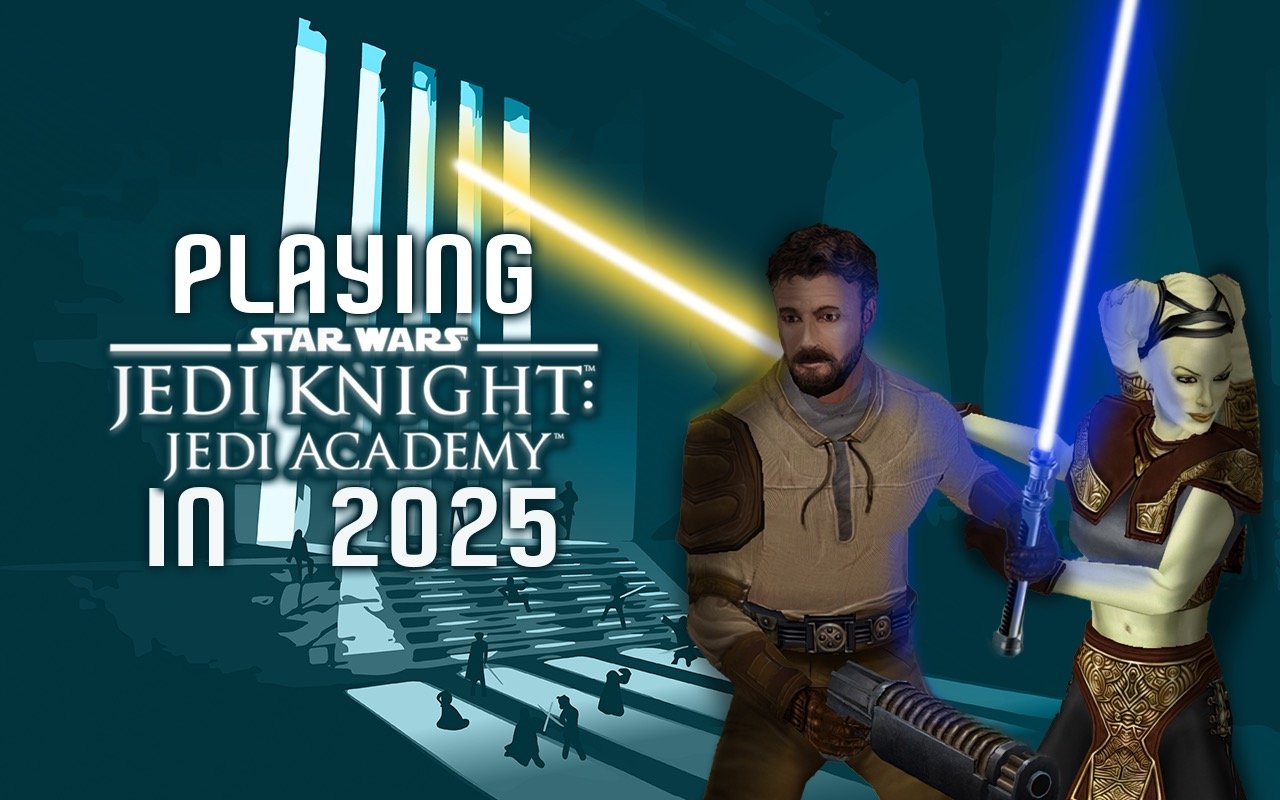
Hey folks. As you know, we've been trying to bring you more articles from all corners of the Jedi Academy and Jedi Outcast community. About a year ago I interviewed SiLink to get some info and a deeper look into the JAWA clan. Now we're bringing you another clan feature!
I got to sit down and ask some questions with Aldro Koon, leader of the Jedi Academy clan Jedi of Freedom or JoF. If you've been playing JKA multiplayer for the past few years, you may have noticed one of the most popular servers is JoF's server. They almost always have more players than any other server currently. Not only people playing, but members of their clan. It's great to see such activity and success in a server and a clan in this day and age, but many people don't know much about JoF, as they tend to keep to themselves. Read on to find out a little more about Jedi of Freedom and Aldro!

When did Jedi of Freedom begin? What were some of the reasons and vision behind creating it? Give us a brief background.

It began with me and my brother (Shree) who were pretty much tired of going from clan to clan only to have each clan end up closing down. We just wanted to be a part of a clan that would actually stick around for longer than a few months. A clan where our progress and relations with members would go the distance and perhaps even one day go beyond the game itself. So in 2006, on the 1st of November, we decided to create Jedi of Freedom. We wanted a community that would last. We adored the game at the time and we still do. So our goal was to basically work on achieving that along with preserving Jedi Academy, more specifically the JA+ mod because we figured as the game gets older, its not exactly going to raise in popularity. Even back then, there were so many players who said "its a dead game, people wont play it for much longer" yet its 2016 and our clan is just around 100 members with a rather strong daily activity count.

It seems JoF has lasted quite awhile, despite the age of the game. Why do you think that is? Is there a secret formula for maintaining a successful clan in this day and age?

Thats a really good question. Its hard to pinpoint an actual "formula" for why we are where we are. But I have noticed that similar to games like an MMO and such, having regular updates to the clan similar to "patches" end up boosting the clans morale and activity. If you just let the clan run on autopilot for a while, things actually start to become fairly stale. We are fortunate to have so many good people in the clan that contribute with ideas, so this tends to come rather naturally for us. There are so many new things we have added in just the last year and the last year has in fact been one of our best years yet. I do believe there is a correlation there.
As a leader, there are decisions and choices that you make which are not always easy. While I personally always try to listen to others and while I do want to satisfy as many people as possible, there are times where I feel like I have to trust my own instincts based on past experiences. Leading a clan for 10 years tends to give you some insight that others might not have. There are situations where I have to maybe take precaution and do something that not all members of our clan agrees with. But both me and Shree as leaders are truly fortunate to have members that while they may not see eye to eye on certain situations: still understand that the motivation behind our decision is entirely based on our love for the clan. They understand that we are doing what we truly believe is the best for the clan in order to ensure longevity to the community. Without this trust, there would be no clan.
But for the success I have to really give most of the credit to our members both those here now and those long gone. The clan is only as strong as the people who fill it and we are truly lucky to have such a great community. I mean these members of ours have even held a real life meeting in the Netherlands last summer. Two of our members (who both live together in real life) got engaged during this meeting. So I do believe that we have succeeded in taking the community beyond what the game allows. We truly are a family in that sense.

Tell us a little about JoF's current status and how it's been the past couple years, compared to a couple years ago, or when it began.

Currently I do think we are in one of our better years. Our membership count is around 100 members, with us booting members who don't login to the boards at least once every 2 weeks (assuming they don't give us a heads up). Prior to last year, our membership count never exceeded 70 members. So all in all, the last 12 months have been very good for us. We've topped the gametracker server ranking numerous times as the most active server in the game along with holding a rather consistent first position when it comes to clan servers in general. We had so many recruits in the last few years that we had to introduce a system we call the Jedi of Freedom Academy. A seperate website database of sorts where all applicants go to in order to apply to join the clan. Our members can give us feedback there on each individual applicant and we can monitor their activity and statistics much easier. It was developed by our Low Councilor, Darren and let me tell you: It has made the recruitment process A LOT easier for us.
That is not to say you need to play daily and have no real life in order to enter the clan. But what we value the most is that you come across as a good person who enjoys the game and that you have a genuine interest for the clan itself. Making friends with our members is something that we find very important. So what better then to let our own members rate each applicant?

What's the typical demographic of your clan? Is there a majority from a certain region of the world or is it fairly spread out?

We are a European clan. English is a must. But we have members from all over Europe really. All of Scandinavia, Germany, Netherlands, Romania, Hungary, you name it. That is not to say we do not have members from other regions (such as America) but that would be a rare person or two. Age is another thing that differs greatly. We allow anyone that can speak English to join.

How long have most of your members been playing Jedi Academy? Do you still recruit new players?

Very hard to say. There are so many members. I myself started playing a year after it released. My brother started playing the day of release and he even played Outcast before it. Then there are members who started playing in 2005, 2006 or even as late as 2010 and onwards. But we do have members that are very new to the game. The steam sale that came a year or so brought us some really good members, one of them who is a Low Councilor right now. Its always nice to see new people finding the game and making their way to us. So yeah, we still recruit new players. At least we try to!

Do you have any "alliances" with other clans or groups? Do your members tend to socialize outside of JoF's server, or do they tend to keep to the clan? If the latter, why so?

The members are free to do whatever they please when it comes to how they spend their game time. Being in a clan does not mean you are forced to spend your time with the clan only but obviously we look for members who attempt to give back to the community and one of the key factors of doing this is to simply play with us. We do not have alliances. In fact in the history of the clan, we were only ever once officially allied to one clan and that was DAJ (Dark Angels Jedi Order) back in 2010.
We believe that in order to have a long lasting and unified community, we are better off focusing purely on us. Why hold events with another clan when the server only allows for 32 players? Why not strive to fill those 32 with our own members? Being a member of plenty of clans in the past: there was always a thought in the back of my head that I constantly think back upon. Whenever there was some drama or something that made me uneasy, I could not help but feel that "the grass might be greener on the other side" when it came to other clans. An alliance I feel would only enforce this. Inner clan drama is something we try to keep greatly reduced and for the most part I feel we succeed. But with 100 members, sometimes it is inevitable. Then there's also the fact that mods and server settings are so vastly different. The reason we do not do alliances or communicate too much with other clans is because we desire to be focused on ourselves entirely. It's definitely narcissistic from a certain point of view but I do believe it yields results. "Why go to another server when I can go to my server?" That is a question we want every member to subconsciously ask themselves.

JoF prides itself on it's "academy" structure, keeping the film-inspired Master-Padawan relationship, while teaching players how to get better at using a saber. How has that affected the overall skill of the members? Do you see new players quit out of frustration?

Well this is a bit complicated. You see, a master in our clan has no real responsibility of teaching the Padawan anything when it comes to actual sabering skill. Early on, we realized that the single most important aspect of a clan is not to train people and make them become dueling beasts. But rather, the single most important aspect of a clan is to create a sense of belonging. Companionship. Friendship.
So the role of the master in our clan is to simply act as a guide and close friend to said Padawan. The master tells you how the clan works. He is the one you turn to for any questions you may have. He is ideally your best friend in the clan. We have a ton of trials and such in the clan but none of them require any real saber skill to pass. At most you need to practice some jumps for an hour or two. Basic common knowledge about the game itself will enable you to pass them. The trials are made to be as basic as it can be and your master can (if you ask for it) help you prepare you for them.
But actual saber skill is something that we offer to members who at least slightly prove that they are up for the task by doing a trial that is a bit more demanding along with that person basically saying he wants to seek skill. The member also has to give back a bit to the community before he is given a teacher. The role of the teacher is to act as a dueling coach. The badge of teacher is only given to those who are deemed strong enough to teach (this requires you to go through a learning process first). Usually the interest of members get sparked when they come across and duel a member who is considered a teacher. There is a whole system we have in regards to dueling as I am sure many have heard of it by now but it would be a bit excessive to get into that, I feel. In short, we teach different ways of dueling (offensive, defensive with strong stance for example) and each teacher is specialized in at least one or two of them.

Many people have noticed the {{S}} tags on both your server and others, and are curious what it is and why are they sharing a server with JoF. Can you talk a little about that?

Well the concept of {{S}} was brought to me by a close friend and former teacher of our clan. He told me how its a shame that there does not seem to be a Sith equivalent to what JoF has. So I said if he is up for the task, he can attempt to build one and we would do our outmost to help it, provided that the clan is under the same community as JoF. This means that while {{S}} has its own rules, its own home server and its own structure => the members of {{S}} should still be a part of the same community as {JoF}. Thus a shared server, a shared forum with common categories between us and overall a shared sense of activity. In this sense, any member that we may reject, we can send that person to try out for {{S}} if he wishes. Likewise {{S}}'s member count directly adds to our activity on the forums and shared server. So while {{S}} is its own clan, it is still a part of our community. It is still early in development and time will tell how well it will be established but for now, that is the current situation. {{S}} is not even past 6 months yet since its creation.

What do you see for the future of JoF? Any plans for 2017 and beyond?

We try to take a day at a time. Its hard to say where we go from here but hopefully we can continue on the path that we are going. There truly has not been a better time to play Jedi Academy for us. And for that we are grateful. Thanks!

That's really great to hear. Glad to see the game not slowing down in some corners of the community! Thanks so much for taking the time to answer my questions and give the rest of the community a little insight on Jedi of Freedom.
If you'd like to get to know Jedi of Freedom even more, or perhaps if you're interested in joining, visit their website or their server!
/connect 31.186.251.31
By Circa, in Interviews,
- 10 comments
- 2,790 views



 1st Place Winner Reepray with Rishi Station 2,
1st Place Winner Reepray with Rishi Station 2,  2nd Place Winner chloe with Oasis Mesa, and
2nd Place Winner chloe with Oasis Mesa, and  3rd Place Winner Artemis with TFFA Brutal! Amazing submissions by everyone!
3rd Place Winner Artemis with TFFA Brutal! Amazing submissions by everyone!

